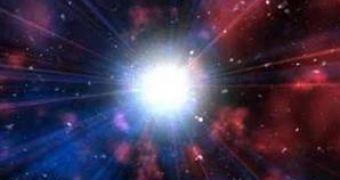A massive star, burning brighter than our Star, eventually depletes its helium in the core, and without any source of heat to balance the gravity, the core collapses until it reaches nuclear densities. This produces a supernova explosion.
For the first time, astronomers discovered a star that seems to have died twice. They noticed two separate explosions that were part of the fiery death of one of the most massive stars known to exist. The recently-observed supernova is making some astrophysicists doubt prevailing theories about the way stars die.
This monster star, estimated to be 50 to 100 times as massive as our sun, was located in a galaxy 78 million light years from Earth, and its explosion was truly gigantic. The first explosion remained visible for about 10 days, and two years later, a second, much more powerful explosion was detected from the star.
"In the 2004 outburst episode, the star lost a significant amount of the external mantle, while in the 2006 episode its heart collapsed, likely forming a black hole, while the rest of the star exploded as a very luminous supernova," said Andrea Pastorello of the Queen's University Belfast in Northern Ireland researchers.
Most probably, the first explosion threw out most of its initial material, hydrogen and helium, leaving it about 15 to 25 times more massive than the sun before its 2006 supernova. Then, in the fall of 2006, the star exploded into a full supernova, much sooner than expected. Named Supernova 2006jc, the dying star's blast wave apparently reached the shell of drifting material released in the earlier outburst in mere hours.
In fact, the first blast was so powerful that is was mistaken for a supernova, so the second explosion astonished the astronomers, as the two explosions were in the exact same place.
This was the first time a double explosion had been observed, and provided much information about the life and death cycle of massive stars.

 14 DAY TRIAL //
14 DAY TRIAL //